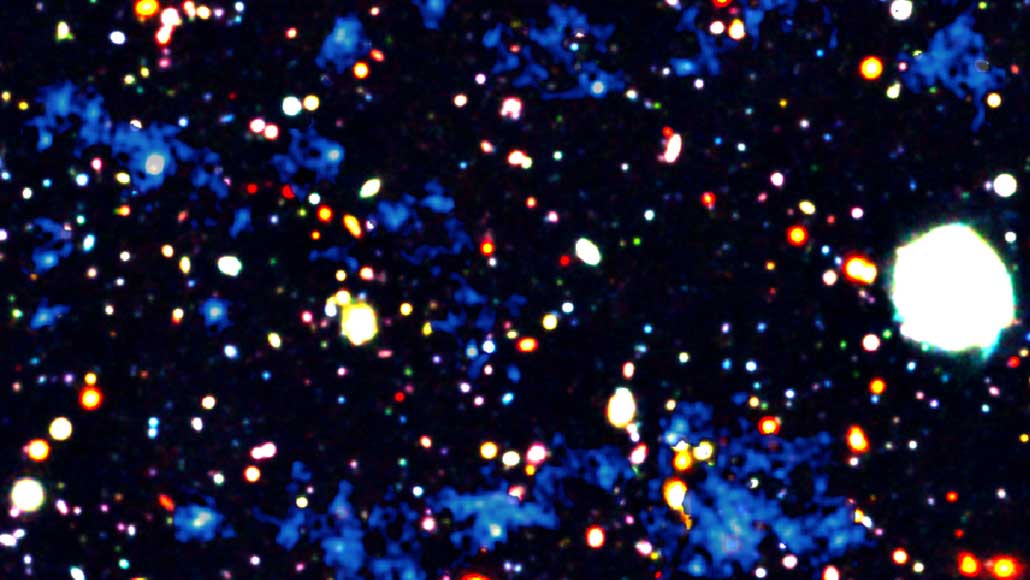
Scientists have spotted filaments of gas (blue) in the cosmic web, which thread between galaxies (bright spots). The gas and some of the galaxies are part of a protocluster, a clump of galaxies in the process of forming.
Hideki Umehata

Scientists have spotted filaments of gas (blue) in the cosmic web, which thread between galaxies (bright spots). The gas and some of the galaxies are part of a protocluster, a clump of galaxies in the process of forming.
Hideki Umehata